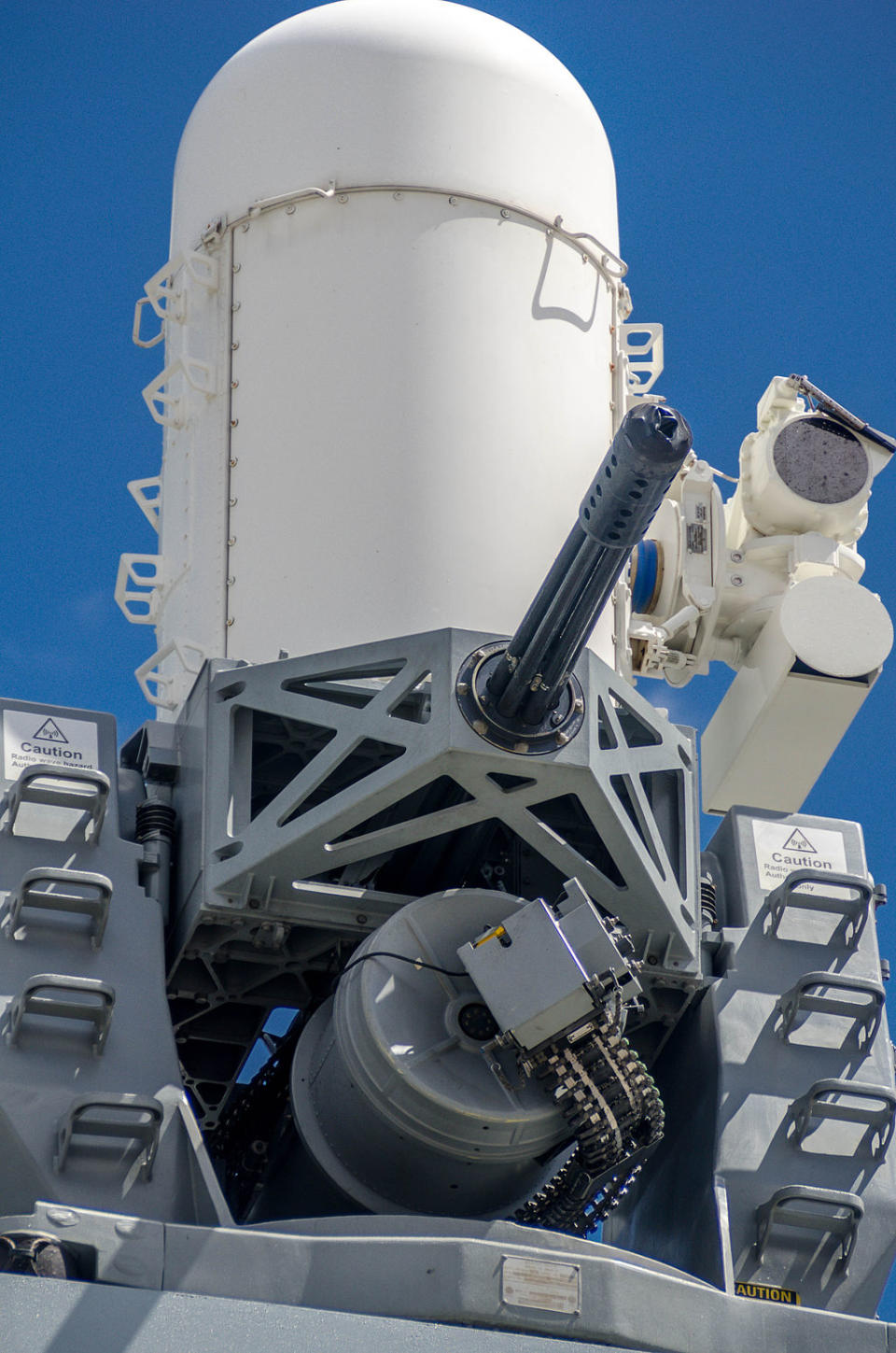How a Navy Destroyer Can Beat a Missile Attack

The first hint that the USS Mason was under attack this weekend came with return signal registered on the screen of a radar operator. Something has risen from the coast of Yemen and was streaking toward the ship. It's a nightmare scenario in modern naval combat - someone was trying to sink the American destroyer. Within an hour a second missile appeared on the screen, also aimed at the American vessel.
The pair of missiles missed the Mason and hit the water, the Pentagon says. But the close call highlights a dangerous situation off the coast of Yemen, and what U.S. forces have at their disposal to combat attacks like this.
When the attack happened, the Mason was about 12 miles off the coast of Yemen, stationed near the Bab el-Mandeb strait. That's a busy patch of water that connects the Red Sea to the Gulf of Aden. It's a popular transit for ships passing through the Suez Canal. It also skirts a war zone, where a proxy conflict between Saudi Arabia and Iran has spilled over the shoreline and into international waters.
In early October, a missile fired from the shoreline struck a ship operated by the United Arab Emirates. USNI News was one of the few to report on the incident. Defense officials told them that the missile struck "the HSV Swift, a high-speed ferry that was once used by U.S. Military Sealift Command and leased to the UAE." Houthi rebels, the proxy fighters aligned with Iran, released a video claiming to depict the attack.
A proxy war between Saudi Arabia and Iran has spilled over the shoreline and into international waters.
Afterward, the U.S. sent three destroyers into the area, cruising around the coast of Yemen. Destroyers have long-range missiles and deck guns, but they are particularly adept at playing defense. These are the ships that help protect aircraft carrier strike groups.
That brings us back to Sunday's attack, and that radar screen. Missiles are dangerous ship-killers, but destroyers are built to thwart them. That starts with detection, the job of the SLQ-32 radar.
In a fight against a missile, time is everything and spotting it is not enough. The ship has to know what kind of missile is coming to prepare the appropriate countermeasures. How is it guided? What's it's speed? Does it skim the waves or careen from above? Is the missile made to kill ships or just something the attackers had handy? The SLQ-32 system has an online library of emitter types for rapid identification, its maker Raytheon says. "It can detect aircraft search and target radars well before they detect the ship," the company says.
The Mason also has other air and missile defense radar to track the threats and guide the countermeasures. All these systems work together automatically to enable the crew to react in a situation where seconds matter.
After the Mason's radar identified the threats during this incident, defense officials told media, they employed defensive measures. That could be as simple as getting out of range, but there are plenty of tricks a modern destroyer can use to deke a missile. And all Navy and Coast Guard ships that deploy to hotspots practice missile defense drills.

Then there are decoys. There are six-barreled launchers on the deck that can spit out chaff that can throw off radar-guided missiles and flares that will draw away missiles with infrared seekers. Arleigh Burke vessels also have nifty Nulka active missile decoy systems, which fire a hovering rocket that mimics a ship and "seduces" a missile away from the real thing. "After launch, the Nulka decoy radiates a large, ship-like radar cross section while flying a trajectory that lures ASMs away from their intended targets," the U.S. Navy says. "Australia developed the hovering rocket while the U.S. developed the electronic payload."
The Mason survived this attack, but the incident is telling. While the world is focused on Syria, the conflict in Yemen is also fraught with a risk of escalation. It's a civil war in which two regional powers, Iran and Saudi Arabia, are backing opposing sides. The United States, which backs the Saudis, has witnessed the war grow and intervention on both sides escalate.
A full-scale regional war, on top of a humanitarian crisis, would certainly hamper shipping through these international waters. And without shipping, the global economy will suffer. With Russia and Iran's influence in the Middle East rising and the world's economy at risk, the stakes in the Bab el-Mandeb strait could scarcely be higher.
You Might Also Like

